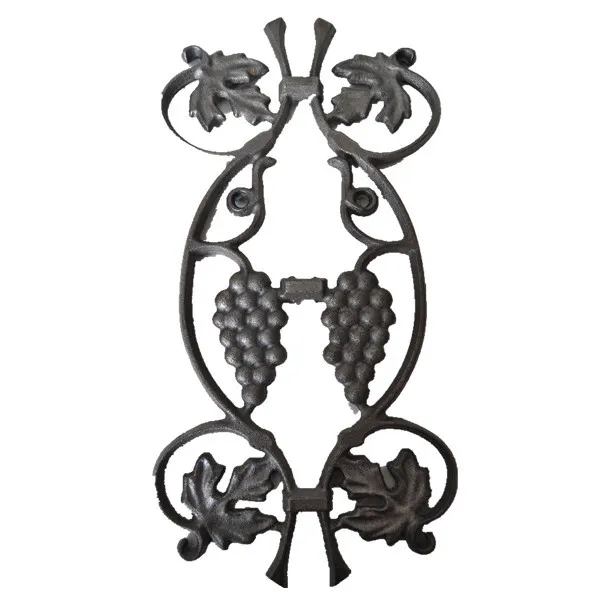hierro fundido
The Versatility and Applications of Cast Iron
Cast iron has been a cornerstone material in engineering and manufacturing since its discovery centuries ago. This iron alloy, primarily composed of iron, carbon, and silicon, boasts a unique combination of properties that makes it exceptionally versatile for various applications. In this article, we will explore the unique characteristics of cast iron, its various types, and its widespread usage across different industries.
What is Cast Iron?
Cast iron is created by melting iron and then adding carbon, along with other elements such as silicon, to create a hard, brittle material. The carbon content typically ranges from 2% to 4%, which contributes significantly to its unique properties. Once melted, the mixture is poured into molds to solidify, hence the term cast iron. The result is a material that is not only strong but also wear-resistant, ideal for numerous applications requiring durability.
Types of Cast Iron
There are several types of cast iron, each with distinct properties and applications
1. Gray Cast Iron This is the most common type of cast iron. It contains graphite flakes, which provide excellent machinability and damping properties. Gray cast iron is widely used in automotive and construction industries for engine blocks, pipes, and machine bases.
2. Ductile Iron Also known as spheroidal graphite iron, ductile iron has improved ductility compared to gray cast iron. Its structure consists of spherical graphite nodules, making it tougher and more resilient. It is often used in applications such as gears, crankshafts, and agricultural machinery.
3. White Cast Iron Characterized by its white fracture surface due to the absence of graphite, white cast iron is hard and brittle. It is typically used in applications requiring high wear resistance, such as liner plates and grinding balls.
4. Malleable Iron Produced through the annealing of white cast iron, malleable iron has improved ductility and strength. It is commonly used in the manufacturing of automotive components, brackets, and pipe fittings.
hierro fundido

5. Chilled Cast Iron This type of cast iron is formed by rapidly cooling the surface of cast iron in a mold, creating a hard outer layer. It is often used for components subjected to wear, such as rollers and shredder parts.
Applications of Cast Iron
The versatility of cast iron allows it to be employed in a myriad of applications across various industries
1. Construction Cast iron is frequently used in the construction of buildings and infrastructure. Its strength and durability make it an excellent choice for beams, columns, and pipes. Moreover, cast iron's aesthetic appeal has led to its use in decorative architectural elements like railings and door frames.
2. Automotive Within the automotive sector, cast iron components are integral to engine manufacturing. Cylinder heads, engine blocks, and exhaust manifolds are often made from cast iron due to its heat resistance and strength under high temperatures.
3. Cookware Cast iron cookware, such as skillets and Dutch ovens, is prized for its heat retention and even cooking. Many chefs prefer cast iron due to its natural non-stick properties when properly seasoned, making it ideal for frying, baking, and roasting.
4. Heavy Machinery In industries requiring heavy machinery, cast iron is used for machine frames, beds, and bases. Its rigidity and ability to absorb vibrations contribute to the precision and longevity of industrial equipment.
5. Art and Sculpture Beyond practical applications, cast iron has found its place in art and sculpture. Artists use cast iron for creating intricate sculptures and decorative items, showcasing its artistic potential.
Conclusion
Cast iron, with its unique properties and versatility, remains a vital material in modern manufacturing and construction. From heavy machinery to artistic endeavors, its applications are as diverse as the types it encompasses. Understanding the characteristics and uses of cast iron illustrates its lasting impact on various industries and highlights why it continues to be a preferred choice for engineers and craftsmen alike. As technology evolves, cast iron will undoubtedly adapt, maintaining its relevance for generations to come.
-
Window Lock Handle for Security UpgradesNewsJun.20,2025
-
Proper Lubrication Techniques for Sliding Gate WheelsNewsJun.20,2025
-
Ornamental Iron Castings for Interior DesignNewsJun.20,2025
-
Creative Ways to Decorate Around a Cast Iron FireplaceNewsJun.20,2025
-
Cast Iron Pipe and Fitting for Plumbing SystemsNewsJun.20,2025
-
Cast Iron Panel Casting for Architectural ElementsNewsJun.20,2025















